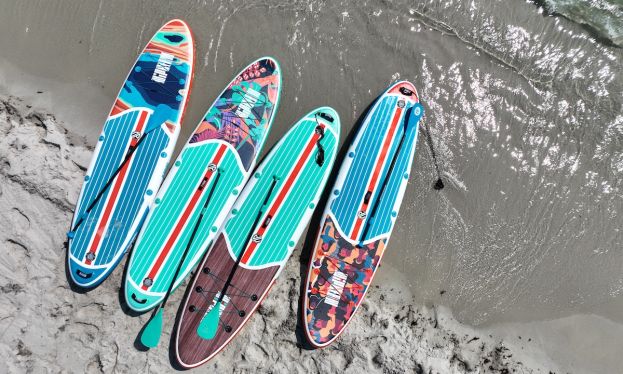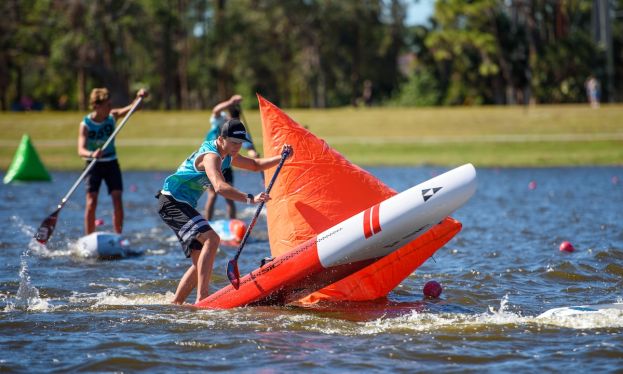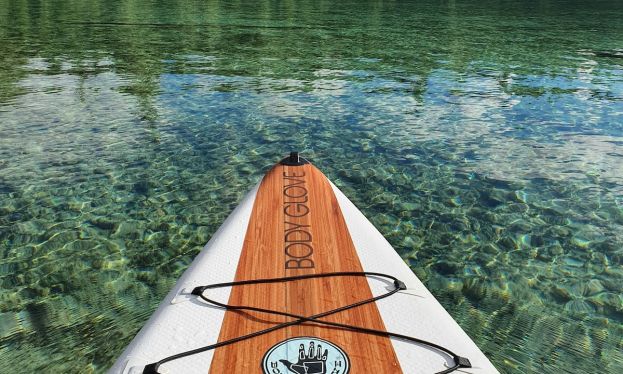How To Do A Frontside Cutback On Your Paddleboard
- Written by Sean Poynter
- Published in Tips
- Comments::DISQUS_COMMENTS

SAN DIEGO, California - Now that you've gotten comfortable getting in and out of the waves on your paddleboard and are a master at catching them, you're now ready to start progressing even further and adding some tricks into your bag. Sean Poynter lays out some tips on how to do a frontside cutback on your standup paddleboard. When doing a frontside cutback there are a few key motions that you need to do in order to successfully execute one and here, Sean lays them all out on the table. Here are his words of advice:
1. Speed.
Make sure you have speed. Having speed coming into the turn is going to better prepare you for your set up bottom turn, weight shifting, and paddle transition. Having speed ensures that you won't fall flat as you do all of these actions.
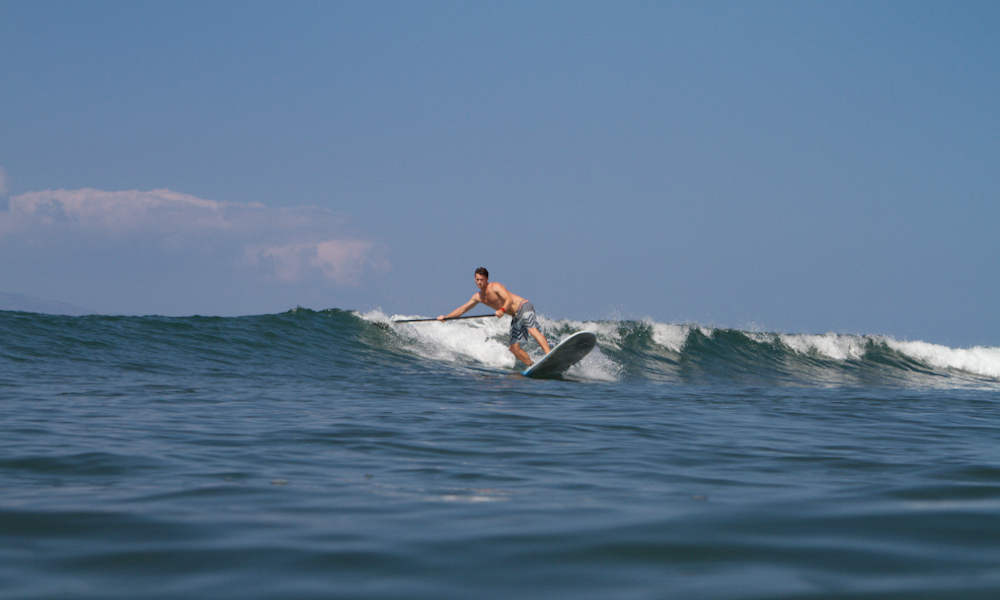 When attempting to do a frontside cutback, make sure you have speed going into it. | Photo: Matty & Elena Schweitzer
When attempting to do a frontside cutback, make sure you have speed going into it. | Photo: Matty & Elena Schweitzer
2. Bottom turn.
This is the first step in performing a proper cutback. With speed, bottom turn as you normally would with shifting weight onto your toe side rail, sinking that inside rail and leaning onto the paddle that is placed down in front of you on the water. With the right foot positioning, (back foot back towards the tail and front foot centered on stringer near the midpoint of board) the amount of weight you shift onto your blade face as it's set in the water is going to determine how hard of a bottom turn you will execute.
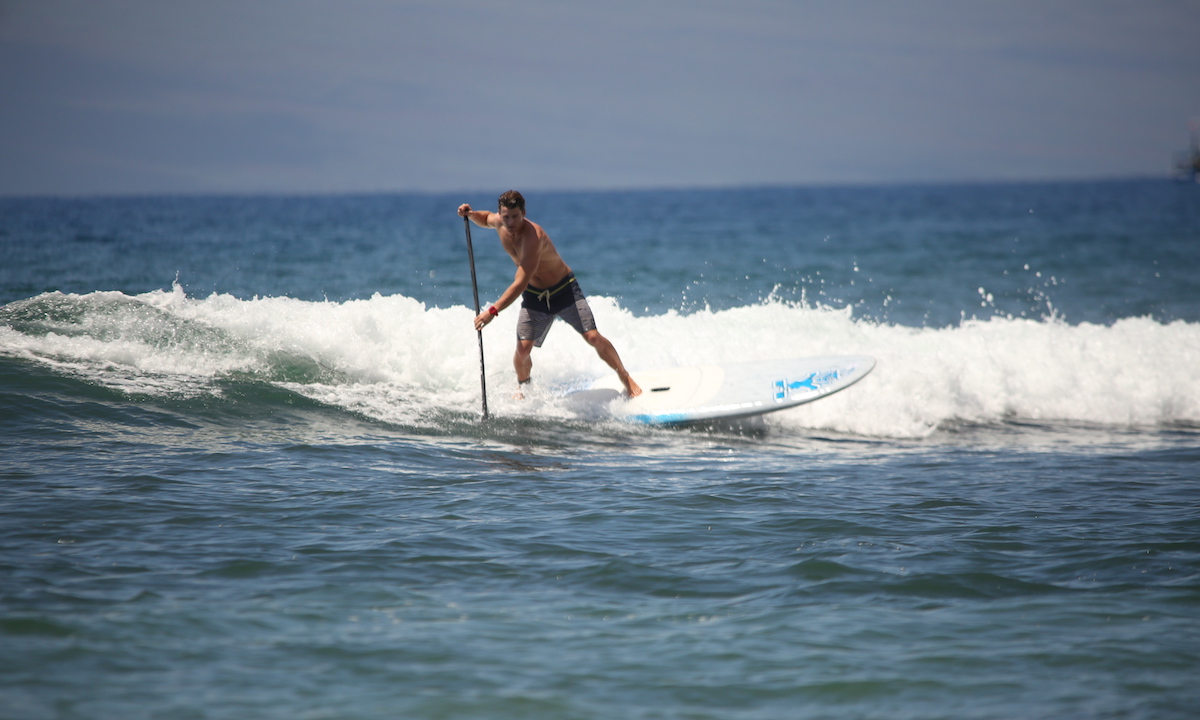
How much weight you can shift is all relative to how much speed you have. The lesser your speed, the less weight you will shift. With more speed, you can shift more. The hazard of shifting too much weight without enough speed will result in falling forward or using all of your speed up. It's important to have speed coming out of the bottom turn as this is only the first portion of the entire maneuver of the cutback. You need consistent speed throughout the entirety of it.
See more SUP surfing tips here.
3. Paddle Transition.
Coming out of the bottom turn with speed, while going upwards up the face of the wave, you want to transition your paddle from your frontside to your backside. Just as you shifted weight onto your paddle in the frontside bottom turn you are going to do the same for the second portion of the cutback which is turning down the wave face. In doing so, you need to transition your paddle onto your inside. The best way of doing this is swinging the shaft where your lower hand is across the board as you simultaneously switch your hands on the paddle from grip to shaft. Once you've made the switch, you want to start the motion of turning down the wave face, meaning, shifting your weight to your heels, sinking your outside rail, and then gradually past your heels and onto your paddle that should now be in the water. This will initiate your downward carve.
 |
 |
 |
 |
Pictured (clockwise): Transition your paddle from your frontside to your backside. Once you've made the switch, you want to start the motion of turning down the wave face, meaning, shifting your weight to your heels, sinking your outside rail, and then gradually past your heels and onto your paddle that should now be in the water. | Photos: Matty & Elena Schweitzer
Turning around your paddle. With your paddle set in the water as it is, your weight overtop of it, this is going to naturally turn you and your board around it. It's the anchor point for which you will pivot around. You will continue with this gradual arcing around your blade face until you need to redirect.
4. Redirecting.
Redirecting is the last portion of the maneuver. The best way to quickly redirect and turn your board back down the line is to again shift the weight back onto your toes but also to plant your paddle in the water across your board, with the same hand positioning as your downward carve. Basically, this a crossbow paddle plant. The combination of both weight shifted on toes and this crossbow paddle plant is going to turn you back down the line as quick as possible.

Redirecting is different with everyone. Depending on how maneuverable you are with your board or how little, will determine how late or early you need to start your process of redirecting. For more advanced riders they may be able to redirect later in their downward carve, and may even turn back all the way to the whitewater and redirect off that. The more novice riders though, will probably want to be done earlier. If saying from bottom turn to downward turn and all the way around to the whitewater is a full circle, I would recommend with doing half of that, so maybe just as you near the bottom of the wave face, redirect.
So there you have it. These are all the tools necessary that you need to have to properly execute a frontside cutback on your standup paddleboard. Now that you've studied and read about it, get out there and start putting it into action!
For more SUP Surfing Tips from Sean Poynter, check out his list of how-to's and tips here.
Were these tips helpful? Let us know in the comments below!
© Supconnect Exclusive Copyrighted Material

Sean Poynter
San Diego, California - Sean Poynter is one of the world’s best stand up paddle surfers. Sean comes from a traditional surfing background where he was easily able to make the transition to SUP surfing and became one of the pioneers for progressing SUP surfing to the level that it’s at today. Sean proves SUP can be taken beyond flat water and into the waves for electrifying surfing performances.
Website: www.seanpoynter.com/ Email This email address is being protected from spambots. You need JavaScript enabled to view it.


